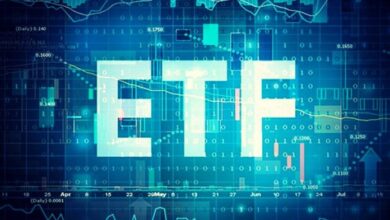How should I invest in exchange-traded funds (ETFs) in India?

In India, the Assets Under Management (AUM) of ETFs doubled between FY21 and FY22, crossing the ₹1.54 lakh crore mark, according to a report released by the Securities and Exchange Board of India (SEBI). The affordability of ETFs compared to other mutual fund investments and their potential to help investors diversify their portfolios has made them very popular in India.
Steps to invest in ETF mutual funds in India:
- Investors must decide on the category of ETF in which they want to invest:
The first step in an investor’s ETF investment journey is to decide on the category of ETF that aligns with their financial goals and risk tolerance. Additionally, they must consider their risk tolerance and investment horizon. For instance, if they seek long-term capital appreciation with a moderate risk appetite, equity ETFs might be a suitable choice. Debt ETFs could be more appropriate for investors who prefer stability and a steady income stream.
- ETF investments that have a high trading volume must be preferred:
High liquidity ensures that an investor can easily buy or sell ETF units at market prices. To avoid potential liquidity issues, investors must choose ETFs with a substantial trading volume. Investors must invest in popular and well-established ETFs, as they often have higher trading volumes.
- Investors must choose ETFs with lower expense ratios:
Expense ratios can significantly impact the overall returns on ETF investments. These ratios represent the annual fees and costs associated with managing the fund, expressed as a percentage of the fund’s AUM. Lower expense ratios are generally favorable for investors, as they result in lower costs, leaving more of their returns intact. Therefore, investors must compare the expense ratios of different ETFs within the same category and select those with lower costs before making an investment.
- Before selecting an ETF investment, investors must check for any tracking errors:
Lower tracking errors indicate that the ETF accurately mirrors the index’s performance. High tracking errors can result in deviations between the ETF’s returns and the benchmark, potentially leading to suboptimal results. Investors must review the historical tracking error of the ETF they are considering, assessing its ability to replicate its benchmark. Generally, ETFs with lower tracking errors are preferred as they offer a more accurate representation of the chosen asset class.
- Investors must define their investment goals before investing in ETFs:
Investment goals will influence an investor’s asset allocation and risk profile. ETFs can help investors achieve various objectives, but their investment strategy should be aligned with their specific goals. Setting clear goals allows an investor to choose the right ETFs that match their objectives and time horizon.
- Investors must reconsider their investment goals and realign their ETF investments:
Investment goals may change over time due to personal or financial circumstances. It’s essential to periodically reassess one’s goals and realign ETF investments accordingly. This process ensures that one’s portfolio remains in sync with their evolving objectives and risk tolerance. As an investor approaches their financial milestones or face unexpected life changes, adjusting ETF investments can help them stay on track to meet their goals.
Setting clear investment goals and periodically reassessing them helps investors adapt their ETF portfolio to changing circumstances and ensure that their investments remain aligned with their aspirations. Investors can make well-informed decisions and harness the benefits of ETF investment in India by following these steps and staying informed about the ETF market.






